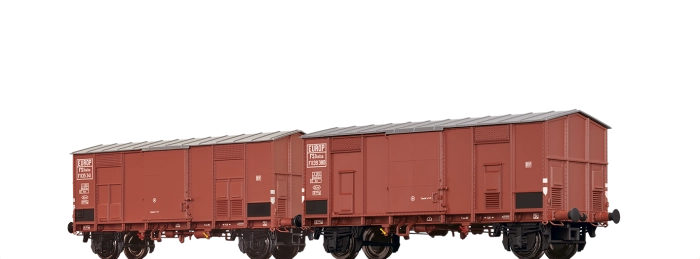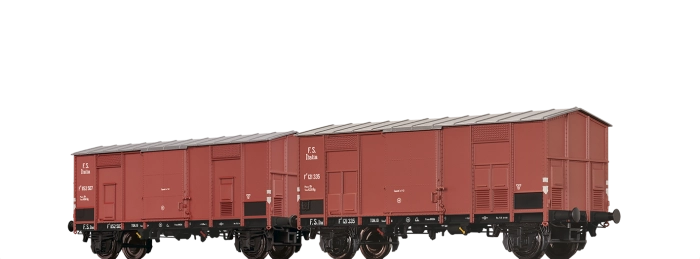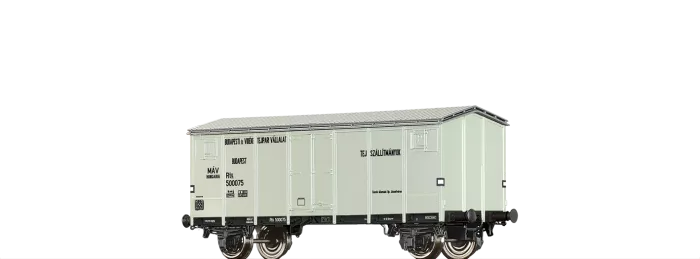
Peak Roof Car Ims "Kühlwagen" FS
Road no.: 11 83 813 1 125-7
Model details
- Fine replica of the wheel bearing
- Free standing steps
- True to original car bottom
- Wheelsets with inside contours
- Kurzkupplungskinematik nach NEM
- Precise paintwork and printing
- Finely engraved rivets
- True to original double wheelchocks
Downloads
Info about the original
In the 1930s, road transport began to become a clear competitor of railway goods transport. In addition, the very slow freight trains stood in the way of increasing the travelling speed of express trains. Therefore, several European railway administrations attempted to increase the average speed of their freight trains. This also required investments in a fleet of cars which could cope with higher speeds in terms of running and braking properties. The Italian State Railways (FS) therefore bought cars of a riveted all metal construction, which stood out due to their wheel base of 6.10 m with very short overhangs. The DRG pursued a similar policy in Germany and developed the Ghs “Oppeln”, which had a wheel base of 6.10 m. A characteristic feature of covered Italian cars was the peak roof which was used apart from a few exceptions. Less conspicuous but just as typical was the use of I-sections for the sole bar. The wheelsets were run in plain bearings and were supported by one, two or even three spring assemblies depending on the class. One of the main tasks of these vehicles was transporting fruit and vegetables all over Europe. Therefore most of the cars had closable ventilation openings in the side and front walls near the floor. Of these, over 17,000 were put into service between 1937 and 1946 with and without a brakesman’s cab as Class F. They often ran as unit trains over the Brenner and Gotthard mountain passes to the North Sea ports. A further 4400 cars, which only differed by one side ventilation flap, were produced between 1942 and 1946. In the 1950s, a total of 3700 cars of both F-types were used in the joint EUROP car fleet. This allowed the member railways to treat the cars of others as their own. They only had to return to their home country for maintenance. Up to the 1980s and therefore for over half a century, a cross-alpine freight train without a peak roof car was almost inconceivable, even at the end of the 1990s the odd example was sighted in many a German shunting yard. An identical running gear design was used as the basis for the ice-cooled car of Class Hg. It also had the characteristic roof and a two-leaf hold door on each side and two openings for filling with dry ice. 1,490 of the Hg were produced from 1938, and after the Second World War, more than 1,000 were built, which had an innovative roller bearing. The refrigerated cars were mainly used over the Alps – many photos of that time show rows of them in the port of Hamburg. However, its hour was already over in the 1970s – the FS bought large numbers of the UIC-Standard I.




